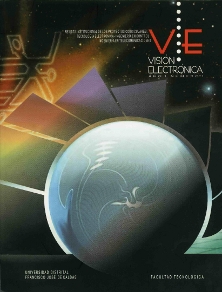DOI:
https://doi.org/10.14483/22484728.18357Publicado:
2018-05-13Número:
Vol. 1 Núm. 1 (2018): Edición especialSección:
Visión InvestigadoraAnálisis de distorsión armónica para controladores dimerizables en luminarias LED
Analysis of harmonic distortion for drivers dimmable in LED luminaire
Palabras clave:
Controlador, Dimerizable, Distorsión armónica, LED, PWM, TRIAC (es).Palabras clave:
Controller, Dimmer, Harminic distortion, LED, PWM, TRIAC (en).Descargas
Resumen (es)
El propósito de esta investigación es identificar el comportamiento de los controladores de atenuación empleados para el funcionamiento de lámparas LED, dando cumplimiento a la norma IEC 61000, a través de análisis de distorsión armónica aplicada a controladores tipo TRIAC y PWM, comparando niveles de iluminación, THDi y corriente. Se demuestra que el controlador tipo TRIAC presenta niveles de distorsión armónica que no cumplen con los parámetros establecidos por la norma, en comparación con el controlador tipo PWM. Se evidencia la inconveniencia de implementar controladores tipo TRIAC por afectar la red eléctrica y los circuitos de donde se esté alimentando, a pesar que es el más accesible y económico del mercado.
Resumen (en)
The purpose of this research project is to identify the behavior of the attenuation controllers used for the operation of LED, in compliance with the IEC 61000 standard, through a harmonic distortion analysis applied to TRIAC and PWM controllers, comparing levels of lighting, THDi and current. The experimental results show that the TRIAC controller type presents harmonic distortion levels that do not meet the parameters established by the standard, compared to the type of PWM controller. It evidence that If TRIAC type controllers are implemented, they affect the electrical network and the circuits where the power is located, since this type of controller is the one that presents the easiest acquisition and lowest cost in the market.
Referencias
S. Uddin, H. Shareef, M A Hannan y A. Mohamed, "An analysis of harmonics from LED lamps", Asia - Pacific Symposium on Electromagnetic Compatibility, 2012, pp. 837–840. DOI: https://doi.org/10.1109/APEMC.2012.6238014
D. F. Castañeda, G. Sáenz y H. Cárdenas, "Estudio comparativo de características eléctricas y fotométricas de LEDs de iluminación de estado sólido y CFLs para iluminación interior", Revista Tekhne, vol. 9, 2012, pp. 9-11.
A. Franco, M. R. Debatin, R. M. Cotia, F. Silva y M. Ribeiro, "Compact fluorescent lamps, LED lamps and harmonic distortion", Journal of Physics: Conference Series, vol. 575, 2015.
S. Di Mauro y A. Raciti, "Analysis and comparison of CFLs and LED lamps", Annual Conference - From Research to Industry: The Need for a More Effective Technology Transfer (AEIT), 2014, pp. 1–6. DOI: https://doi.org/10.1109/AEIT.2014.7002055
S. Uddin, H. Shareef, M. Hannan y A. Mohamed, "An analysis of harmonics from dimmable LED lamps", IEEE International Power Engineering and Optimization Conference Melaka, Malaysia, 2012, pp. 182 - 186. DOI: https://doi.org/10.1109/PEOCO.2012.6230857.
R. Rivera, "Estudio del estado del arte de las lámparas de iluminación LED y su comportamiento armónico", tesis M. Sc., Universidad Politécnica de Catalunya, España, 2014.
S. Ananwattanaporn y A. Ngaopitakkul, "Power quality analysis in light emitting diode lamps", 17th International Scientific Conference on Electric Power Engineering (EPE), 2016, pp. 1–6.
A. H. Jahanikia y M. Abbaspour, "Studying the effects of using compact fluorescent lamps in power systems", 14th International Conference on Harmonics and Quality of Power (ICHQP), 2010, pp. 1–4. DOI: https://doi.org/10.1109/ICHQP.2010.5625407
NTC, "Calidad de la potencia eléctrica - CPE", Norma Técnica Colombiana, 2013.
IEEE, "IEEE Recommended Practice and Requirements for Harmonic Control in Electric Power Systems", 2014.
International Electrotechnical Commission (IEC), "Electromagnetic compatibility (EMC)", 2014.
Cómo citar
APA
ACM
ACS
ABNT
Chicago
Harvard
IEEE
MLA
Turabian
Vancouver
Descargar cita
Licencia
Derechos de autor 2018 Visión electrónica

Esta obra está bajo una licencia internacional Creative Commons Atribución-NoComercial 4.0.
.png)
atribución- no comercial 4.0 International






.jpg)





